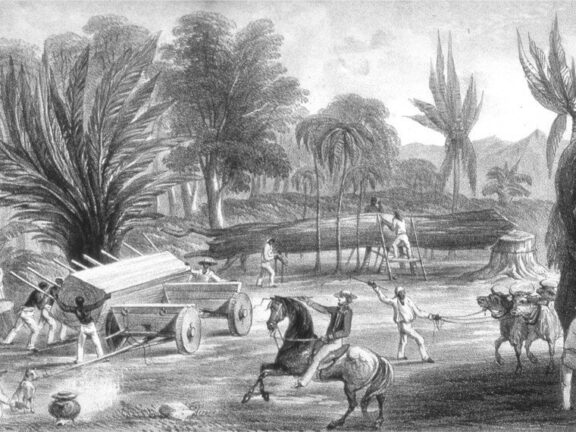Mahogany and Slavery
Mahogany first arrived in Britain in the 17th century; however, its use in cabinetmaking only really took off from the 1730s. The mahogany used in the furniture made for Ninian and Penelope Home came from Jamaica – where the finest quality wood had grown. The oldest trees had achieved enormous sizes and offered cabinetmakers the opportunity to cut the exquisite veneers and ‘flame’ or ‘feather’ grain that is visible in much of the Chippendale furniture at Paxton.
The trees were cut down by enslaved African people trafficked to clear land for new plantations and the wood was shipped to Europe and North America. By the third quarter of the 18th century, or even earlier, virtually all the best quality dark brown mahogany had been cut down and Thomas Chippendale Snr stockpiled it in his workshops for use in his most discerning clients’ commissions.
The demand for land to grow sugar, coffee, cocoa, cotton, tobacco, and other consumables resulted in tropical rainforest and other unique habitats being destroyed. The demand for labourers to work the land to produce these products led to the abuse and deaths of millions of African people.

